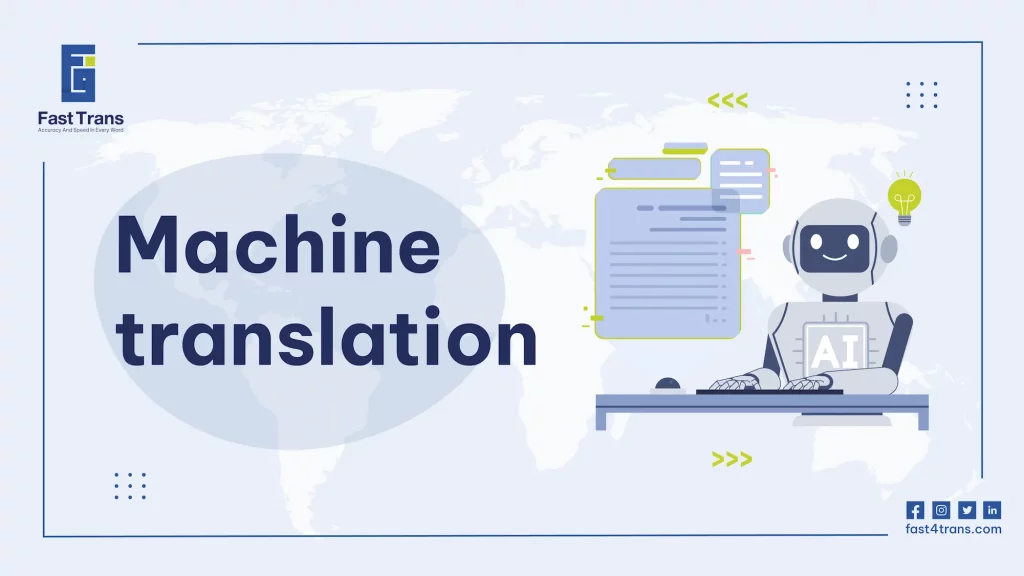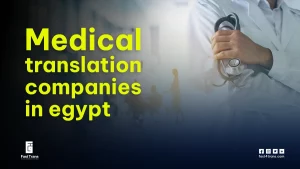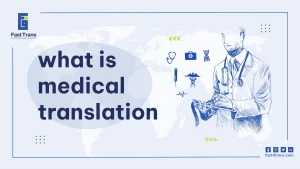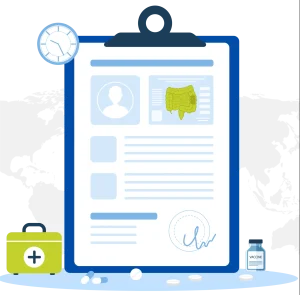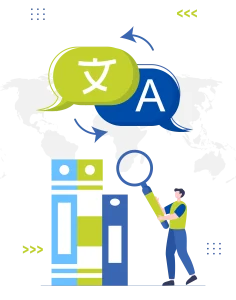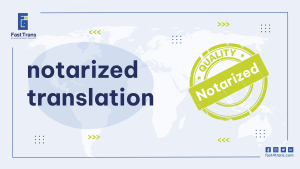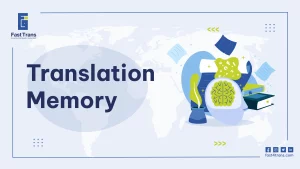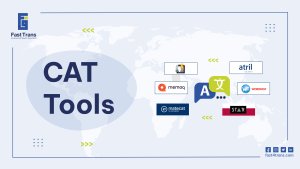Arabic machine translation (MT) automates Arabic text translation. AI-powered systems analyze and convert text, offering speed and cost-effectiveness. However, MT’s accuracy is limited compared to human translation, which captures language, context, and cultural nuances. MT, especially NMT, has improved but still struggles with Arabic’s complexity. Human review remains crucial for accurate and nuanced Arabic translations.
Definition of Arabic Machine Translation
Arabic machine translation is one of the types of translation that is done by using machines and software, where the translator is a computer device and automated programs, not a human translator, specifically for the Arabic language. All you have to do is enter the Arabic text you want to translate from or into Arabic on these programs, and after a few minutes, the translation process of the text takes place automatically.
Arabic machine translation works by using advanced algorithms; so that the machine or program can translate Arabic text according to them, and this is according to a set of steps as follows:
- The Arabic text that is translated by this machine is first organized and filtered using a series of steps.
- After that, the machine’s system is trained and programmed for Arabic translation operations by using examples of Arabic texts and translating them in other languages, or vice-versa.
- After that, the machine picks up the abilities needed to examine the Arabic samples to comprehend them and identify any patterns or potential issues related to the translation of Arabic words or sentences.
- When new Arabic text is entered for translation, the machine then starts utilizing this technique.
- It is important to note that after receiving the Arabic translation, the results may not be precise and often need to be corrected because we occasionally find problems.
What is the difference between machine translation and human translation?
These days, machine translation is used in many professions and businesses. This is mostly due to the diversity and advancement of these translation programs, but human translation is still necessary, and many institutions and businesses still rely on it.
The main and most noticeable distinction between machine translation and human translation is that machine translation is done by machines and programs that have been trained to do so; accordingly, the quality of the translation produced by these methods will be inaccurate, and full of errors. Regarding human translation, as it is done by a human, there is a lower chance of errors in the translated text and a higher level of translation quality.
It is important to note that human translation has to step through machine translation to enhance the translated text’s quality and include emotions that the reader will experience.
What are the types of Arabic Machine Translation?
Arabic language translation systems utilize various approaches, including rule-based, statistical, mixed, neural, transfer-based, and example-based methods. These automated Arabic-to-target language translation tools range from dictionary-reliant to AI-powered, each with varying levels of accuracy and complexity.
1- Rule-based Arabic machine translation (RBMT)
This translation works based on linguistic rules during the translation of Arabic texts; it analyzes the Arabic text that will be translated according to the rules of the Arabic language and then converts it to the target language after analyzing its linguistic rules. So this type of translation faces a large set of problems due to its dependence on language dictionaries, as it needs to add languages manually, as well as human intervention to review and ensure the accuracy of using the rules after translation into the target language.
2- Statistical Arabic machine translation (SMT)
Since statistical models are used to link Arabic words, phrases, and sentences in Arabic and target languages, this type of translation relies on guesswork rather than data processing to achieve the most accurate translation. As a result, the percentage of errors made in this type of Arabic translation increases. It is best suited for translating basic and obvious concepts only and should not be used for translating lengthy, accurate Arabic texts.
3- Mixed Arabic machine translation (HMT)
This translation is a combination of statistical translation and translation based on rules, which means it is of high quality. It processes data and relies on rules and guesses with each other in the translation process from the Arabic language to the target language. Despite the results of this high-quality translation, it still needs professional human translators to review it after obtaining the results.
4- Neural Arabic machine translation (NMT)
In this type of translation, artificial intelligence is relied on; it is trained to learn and improve languages continuously, so when an Arabic text is presented to it, it handles it intelligently and is translated with high accuracy.
5- Transfer-based Arabic machine translation:
This method involves translating from the Arabic language into a transitional text and back again into the target language. This is a lengthy process that involves many small steps.
6- Example-based Arabic machine translation (EBMT):
A database of bilingual sentences is used by example-based Arabic machine translation, which locates examples that are comparable to the input Arabic sentence. A translation is produced by the server by combining and modifying these instances. When handling common Arabic phrases, this method works very well.
What technologies are used in machine translation?
Machine translation utilizes computational linguistics and artificial intelligence, including methods like rule-based systems that rely on dictionaries and grammar rules, and more advanced techniques such as enhanced learning models that improve translation quality through feedback and iterative adjustments.
1- rule-based machine translation:
This method of translating the material is based on dictionaries and grammar. It consists of an established collection of guidelines that control the translation procedure. However, this method has limitations since, while it may work well for some language pairs, it might not be appropriate for languages with different grammatical and linguistic structures.
2- Enhanced learning in machine translation:
Machine translation models have been improved through the use of enhanced learning techniques. The system can produce translations of higher quality because it can gather input on how well translations are done and continuously modify its tests to get better over time.
What are the advantages of Arabic Machine Translation?
Automated Arabic language processing offers rapid, cost-effective translation across diverse dialects and into numerous target languages, boosting content localization efforts. Furthermore, these AI-powered tools can be specialized for fields like law or medicine, ensuring consistent and accurate use of technical Arabic terminology.
1- High flexibility:
The majority of automated Arabic machine translation resources support a wide variety of languages, including Arabic and its various dialects. With the least amount of time and work possible, you may localize your content, including Arabic content, to numerous audiences by using these advanced tools that translate many languages at once.
2- Speed translation processes:
Arabic machine translation can translate millions of words for large-scale translation projects involving Arabic in a very short time. Even though the speed of translation operations is one of the main advantages offered by machine translation, what is no less amazing is the high capacity of artificial intelligence, which is the fuel of machine translation. It improves the quality of its translation operations for you, including Arabic translations, by increasing the content that you ask it to translate.
3- Lower translation costs:
Even when human translators are needed to edit texts that have been translated by Arabic machine translation, Arabic machine translation servers are effective in reducing translation costs and the time it takes. Arabic machine translation technologies take the burden off human translators by providing them with various translation drafts, including drafts for Arabic translations, for them to edit.
4- The ability of machine translation to be specialized:
Arabic machine translation can be trained on specific areas using data specific to the target area and its specialized terminology, such as legal Arabic or medical Arabic. This is done by collecting and using large volumes of translated texts from the target field, such as medical, legal, or technical documents in Arabic. Arabic machine translation systems can learn to understand the specific terms used in the field and translate them accurately, including specialized Arabic terminology.
5- Consistency in the use of terminology:
Consistency in the use of terminology refers to the use of consistent terms in different translations, which is important for maintaining accuracy, clarity, and readability, especially in Arabic translations. For example, if a term in an Arabic text is translated differently every time it appears in a document, this can lead to confusion for the reader, and his inability to properly understand the text. Arabic machine translation helps maintain this consistency.
Disadvantages of Arabic Machine Translation
Arabic automated translation tools often produce low-quality output due to the language’s complex morphology and grammar, leading to inaccuracies and grammatical errors. This makes it unreliable for producing accurate and nuanced Arabic text, unlike human translation.
1. Low translation quality
Machine translation fails to provide translated Arabic text with high accuracy, and we note the low quality of the text you are translating, due to the presence of some fixed Arabic terms and expressions that it does not deal with properly during translation. Arabic, with its rich morphology and complex grammar, presents unique challenges. Machine translation often struggles with these complexities, failing to capture the nuances of the language, and it does not rely on accurate sources in the translation process, particularly those that specialize in the intricacies of Arabic.
Machine translation does not provide you with an accurate Arabic translation as human translators do; a human translator understands the Arabic text well before translation so that he can translate it accurately while preserving its meaning and its concept, unlike machine translation, in which the meaning of the Arabic text is not understood, but it is translated literally for words and sentences from one language to another only.
2. It contains mistakes
We note that there are many grammatical errors in machine translation of Arabic, and of course, these errors affect the content and the reader, and they may also affect the meaning of the translated Arabic text. Arabic grammar, with its verb-subject-object (VSO) structure and complex agreement rules, is particularly challenging for machine translation systems, leading to frequent errors.
What is the importance of Arabic Machine Translation?
The importance and benefits of Arabic machine translation appear in many different points, among which:
- The Arabic translation process is instant and fast.
- A large number of Arabic words can be translated in seconds or minutes immediately after entering the text directly.
- Supports a large number of different languages, including Arabic.
- Low cost for Arabic translation.
Some of the machine translation tools
Several machine translation tools, like Google Translate, Naver Papago, DeepL, and Yandex Translate, offer fast and accurate language conversion. These AI-powered platforms support numerous languages and utilize techniques like neural and statistical machine translation to provide quality results.
1- Google Translate
The Google Translate application is one of the most widely used machine translation programs around the world; it supports a large number of languages, reaching more than 100 languages, and a large number of individuals and companies from different countries of the world rely on it for translation.
2- Naver Papago
The Naver Papago application is one of the best translation applications based on neural translation, as it learns from its mistakes in translation and works to understand the type of translation that the user needs to provide.
3- DeepL Translator
The DeepL Translator website is one of the machine translation applications that rely on artificial intelligence, and thousands of new users use it monthly to provide translation in multiple languages.
4- Yandex Translate
Yandex is an application that stands out for its speedy translation and support for a wide range of languages. It is built on statistical machine translation, which goes through development and improvement to become self-learning and deliver high-quality translations to users.
What is the history of machine translation?
The idea of machine translation is not new, despite what some people may believe. Its origins can be traced back to the 1930s, and over the years, it evolved and took shape into the machine translation technologies that are now a necessity in our society.
the Thirties of the Twentieth Century:
In the Thirties of the twentieth century, specifically in 1933, the Soviet scientist Peter Troyansky presented a machine that selects the right words to translate a text and then prints it to the Academy of Sciences of the Soviet Union. That machine was then very simple and primitive technologically.
sixties of the twentieth century:
The American Albak Committee considered machine translation to be expensive, imprecise, and not promising in 1966, at which point fruitless attempts to enhance the technology continued into the sixth decade. The committee advised researchers to concentrate exclusively on creating a traditional dictionary.
the seventies of the twentieth century:
The 1970s witnessed the emergence of the first concepts about structured machine translation. In an attempt to mimic the actions that a human translator takes when working with text, scientists and researchers attempted to replicate the labor of human translators.
the nineties of the twentieth century:
In early 1990, at the IBM Research Center, an automated translation system was demonstrated for the first time that knew nothing about grammar or linguistics as a whole. The automated system relied on its ability to analyze similar texts in two different languages and try to understand the patterns and similarities between them.
The Beginning of the Twenty-First Century:
At the turn of the Twenty-First century, some software development companies established machine translation services over the Internet. In 2008, Japan developed text message translation services on mobile phones, followed by China in 2009, where it included machine translation services in the mobile phones it produces.
the current time:
Recent years have witnessed significant advances in machine translation technology, with Google’s research on machine translation pointing to an optimistic future for this field of translation.
After learning about machine translation and its different varieties, some people may conclude that the development and implementation of these tools will put human translators at risk. However, this notion is false because, despite their best efforts, machine translation programs will always make mistakes and cannot provide texts with the same level of accuracy and quality as human translators. Additionally, texts that have been machine-translated still require human review to ensure accuracy.
Conclusion
Arabic machine translation (MT) refers to the use of automated systems to translate Arabic text. These systems employ complex algorithms, often involving artificial intelligence, to analyze and convert Arabic text into other languages, or vice-versa. While MT offers a quick and potentially cost-effective solution for translation, particularly for large volumes of text, it differs significantly from human translation. Human translators possess a nuanced understanding of language, context, and cultural subtleties, enabling them to produce high-quality, accurate translations. In contrast, MT systems, despite advancements, can struggle with the complexities of Arabic grammar and often produce translations that require human review and editing.
Several types of Arabic MT exist, each with its own approach. These include rule-based systems that rely on linguistic rules and dictionaries, statistical methods that use probability to predict translations, and neural machine translation (NMT) which leverages artificial intelligence to learn and improve translation quality. While MT has seen significant progress, particularly with NMT, it still faces challenges with the richness and complexity of the Arabic language. Therefore, while Arabic MT can be a valuable tool, especially for initial drafts or basic translations, human expertise remains essential for ensuring accuracy and capturing the true meaning and intent of the original Arabic text.

